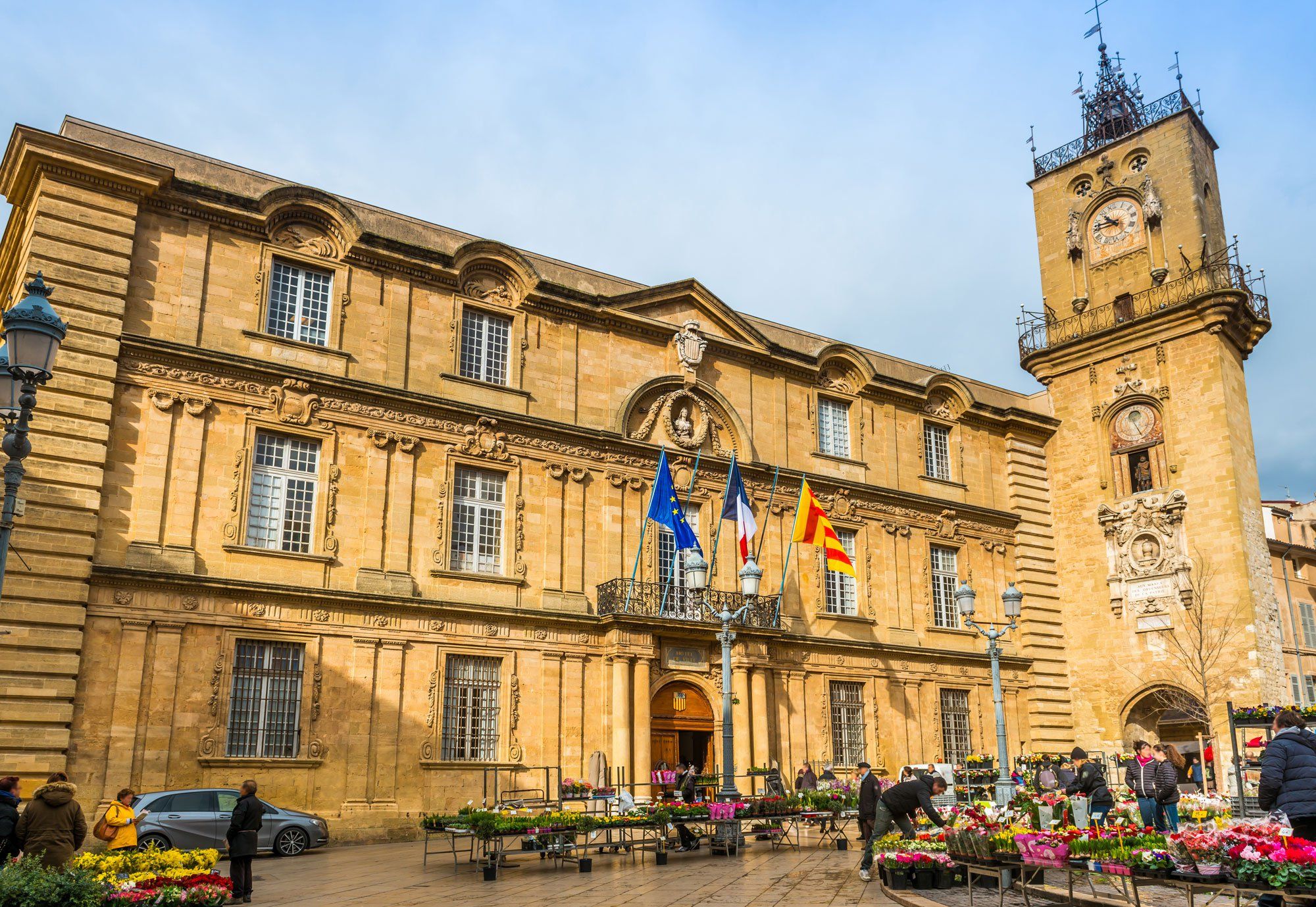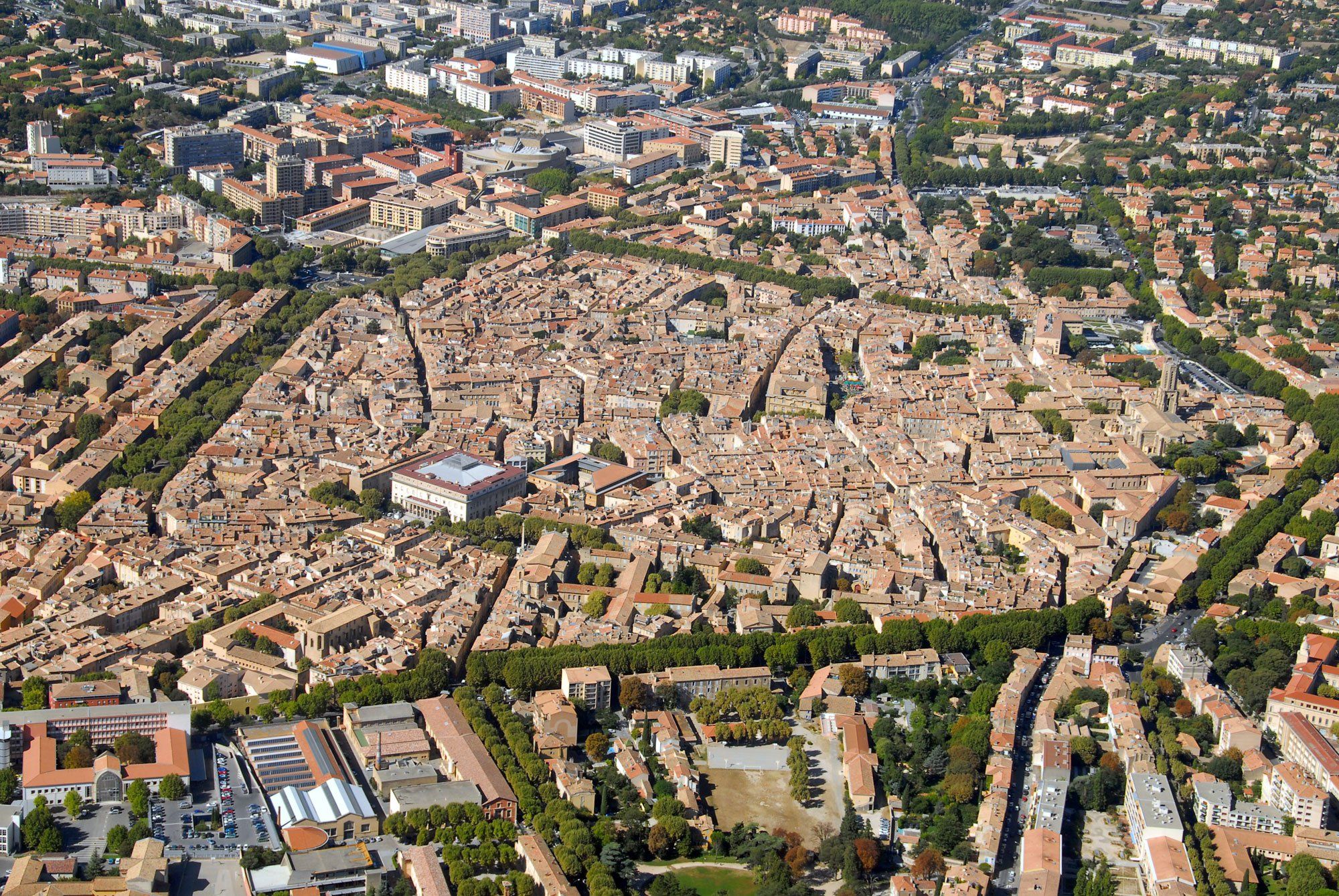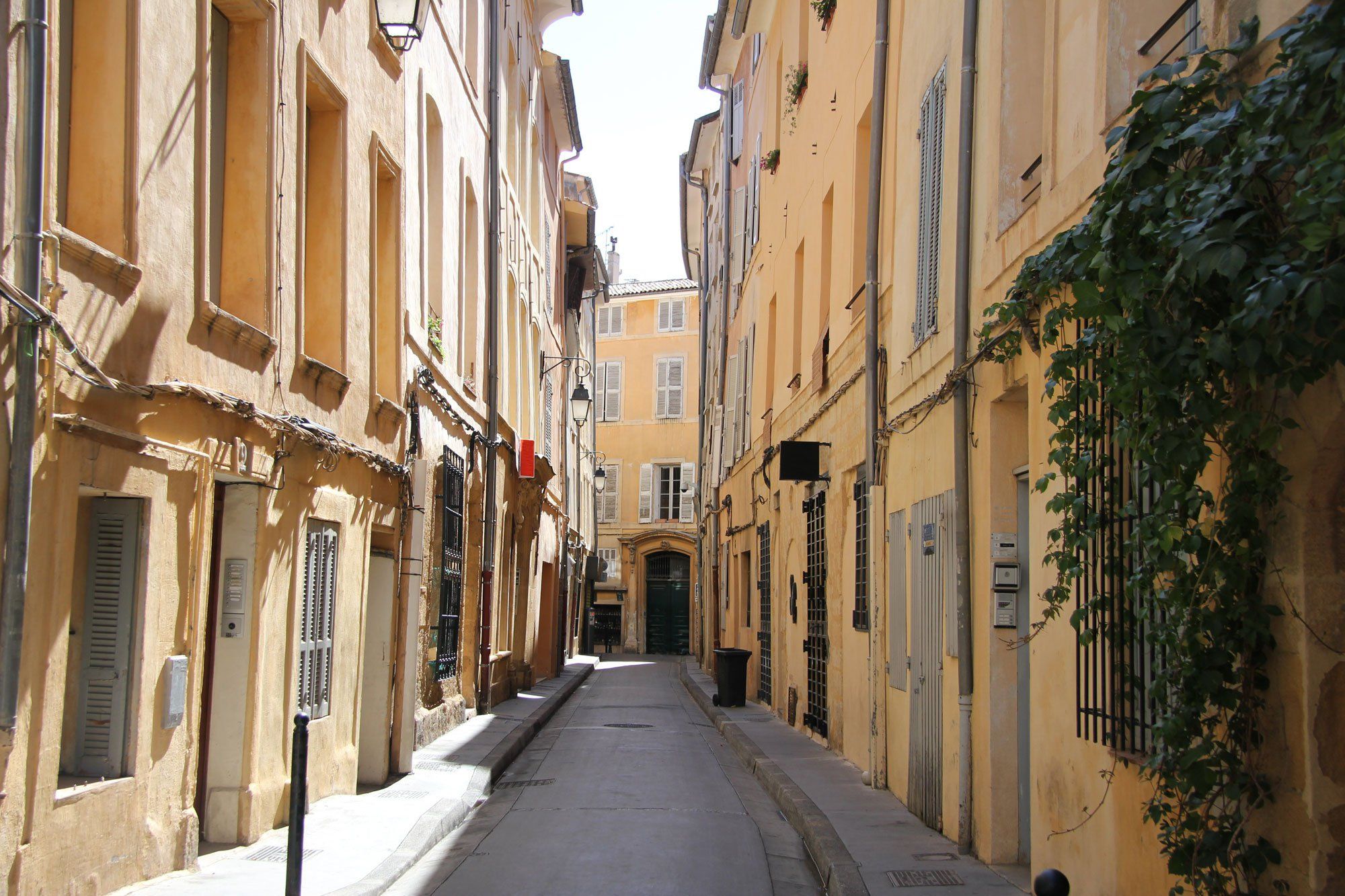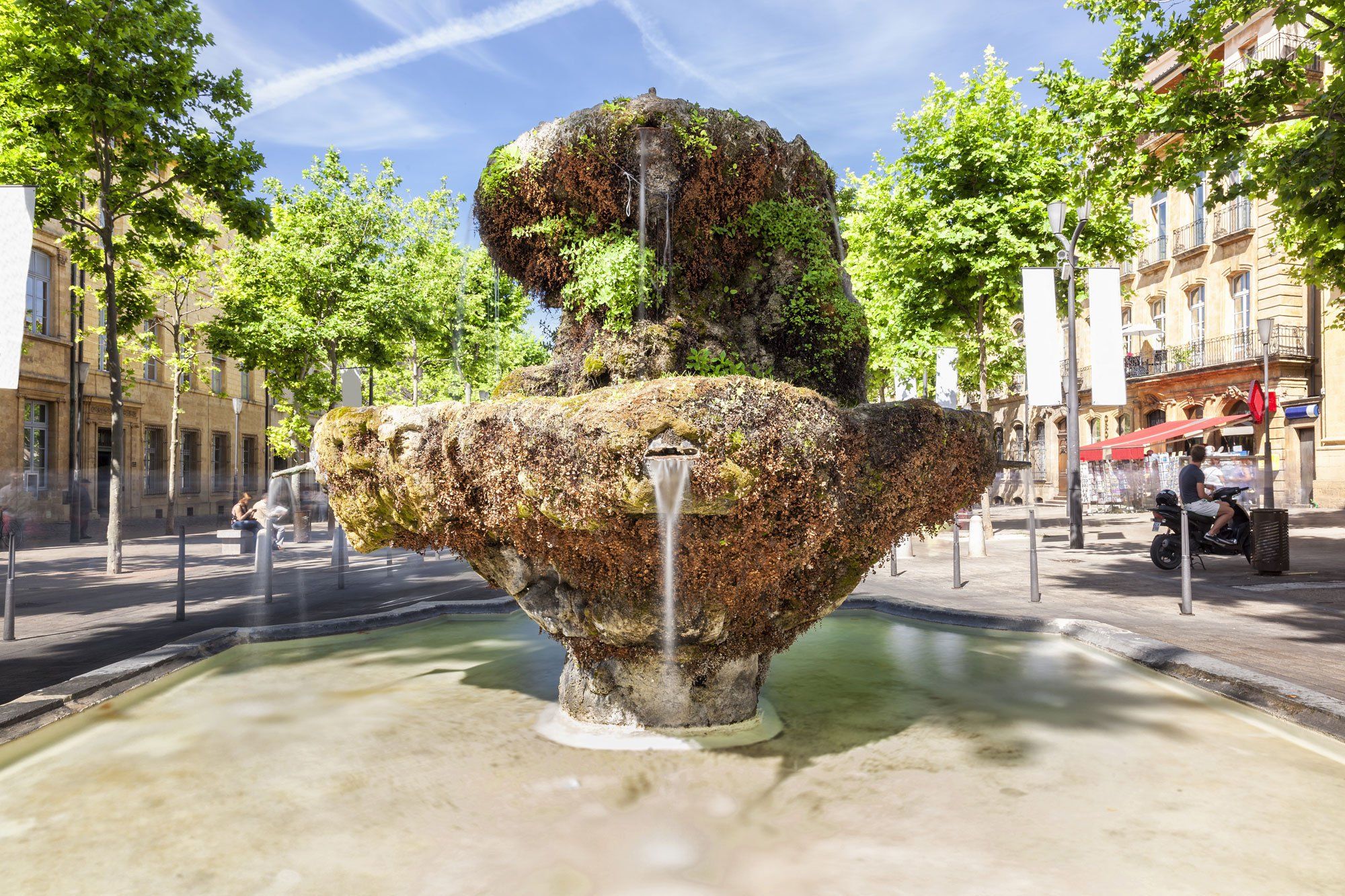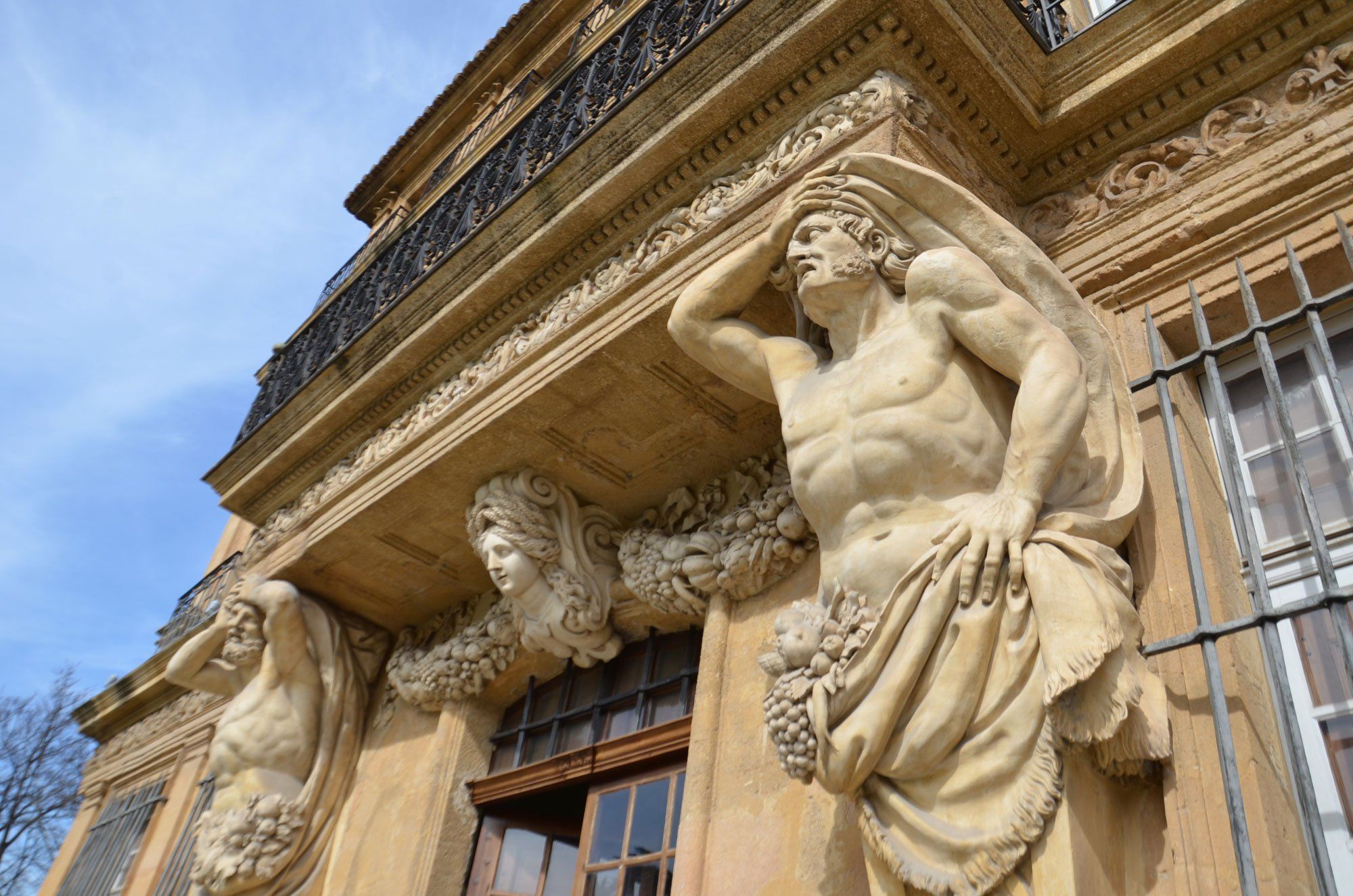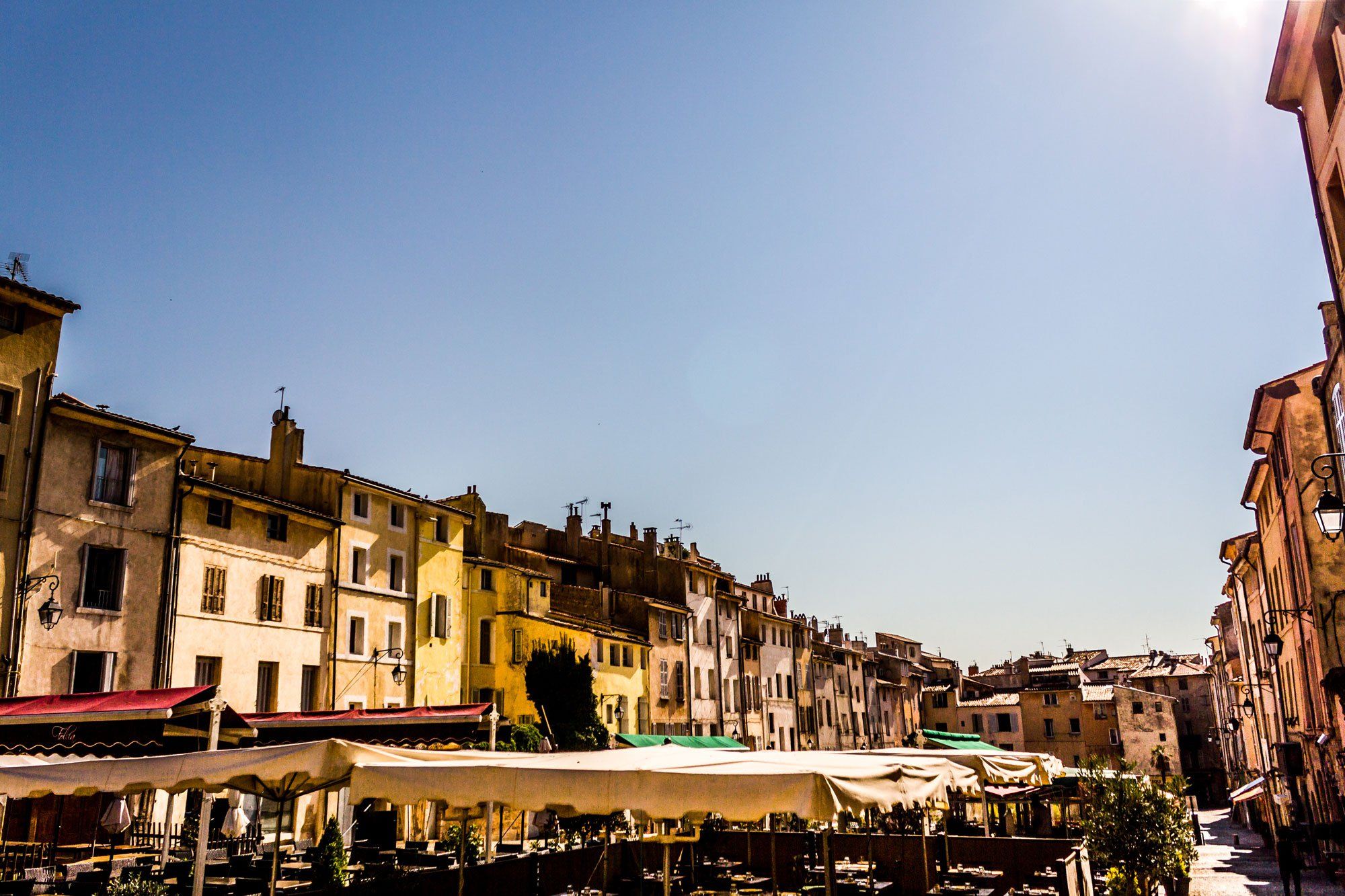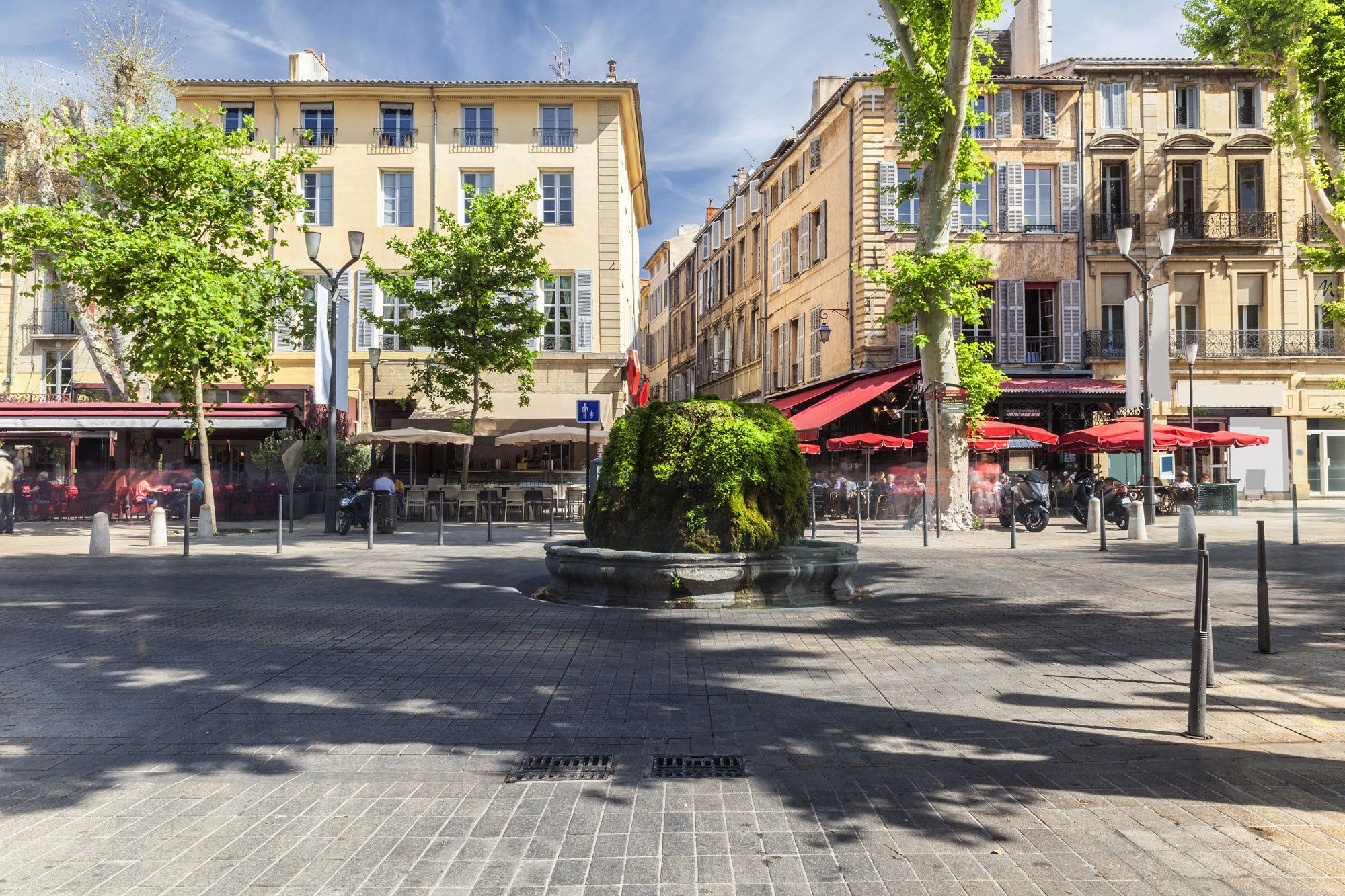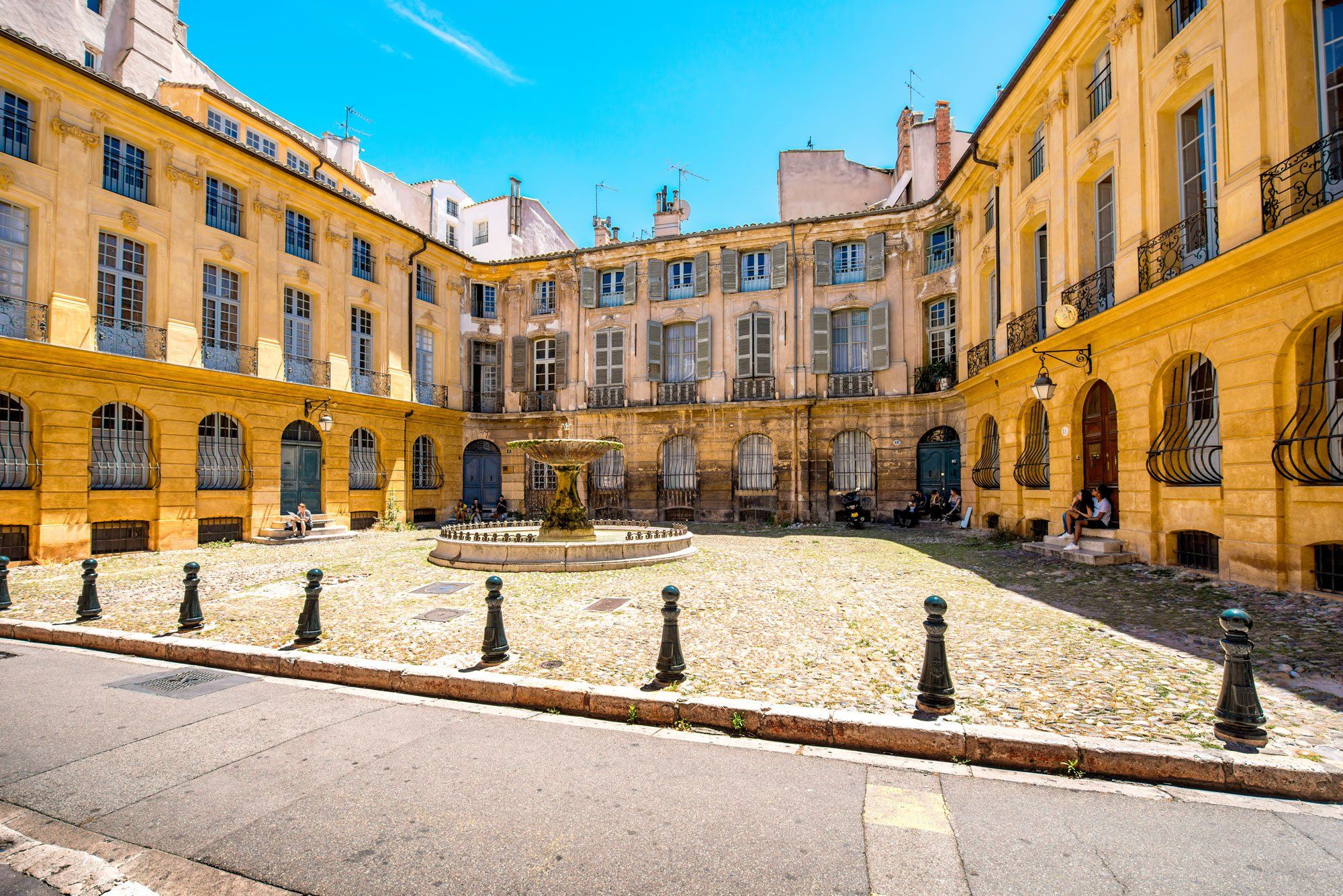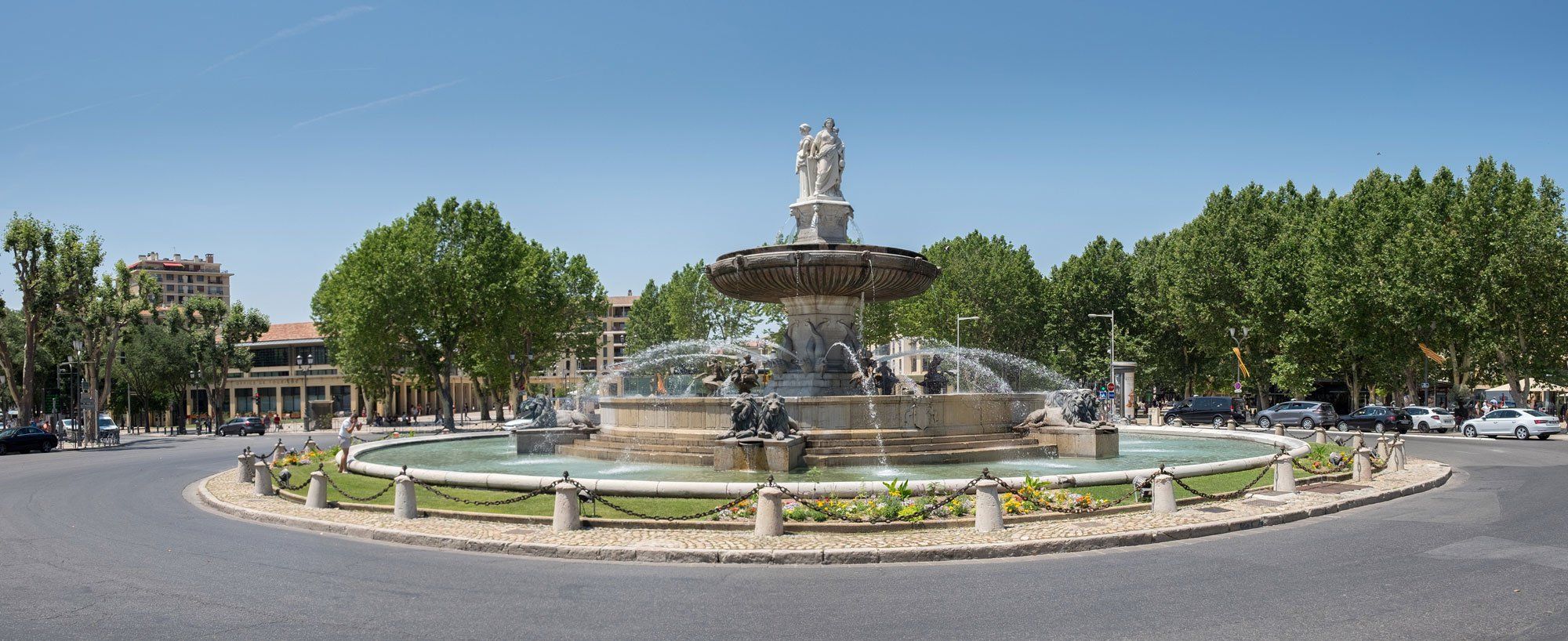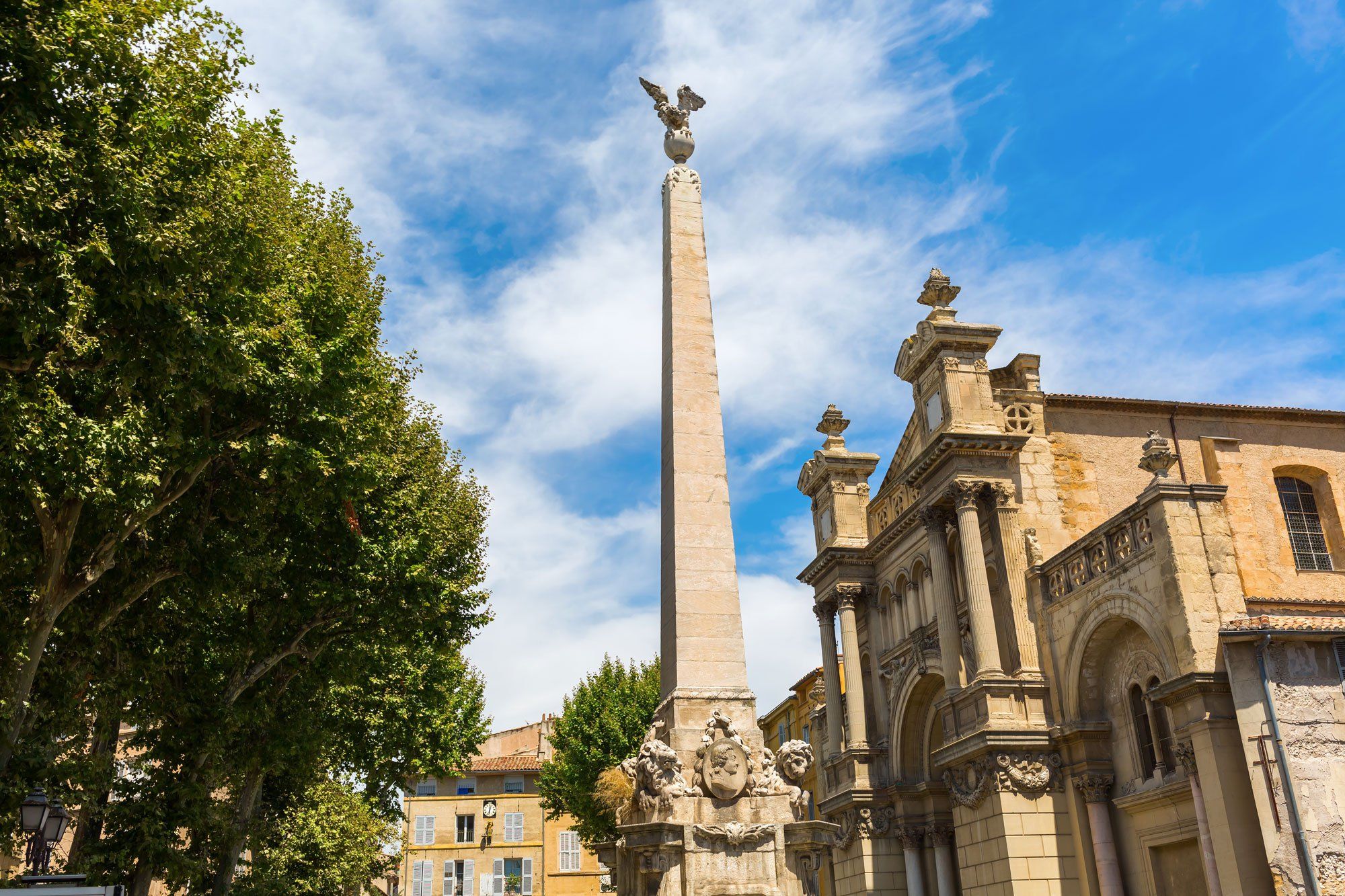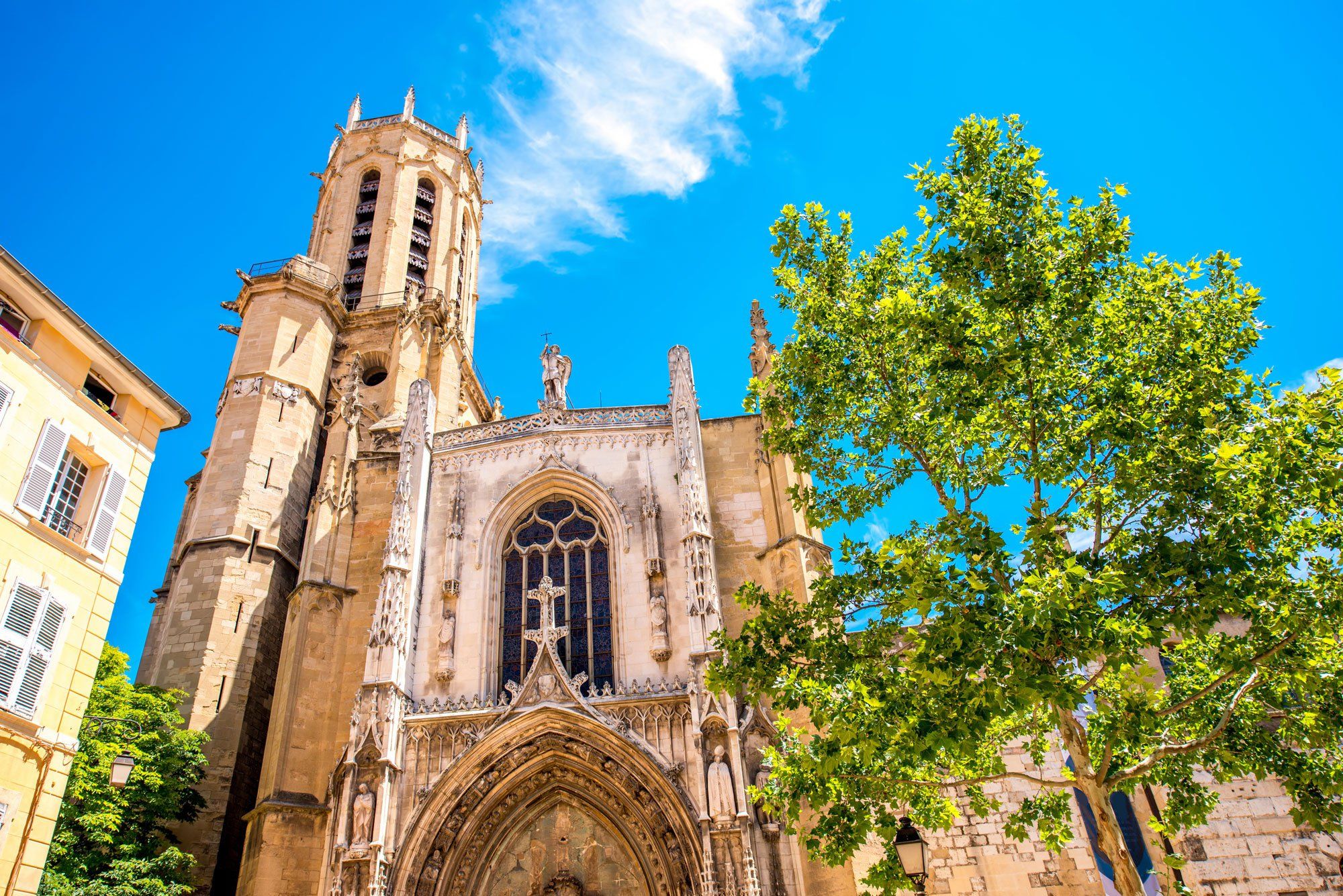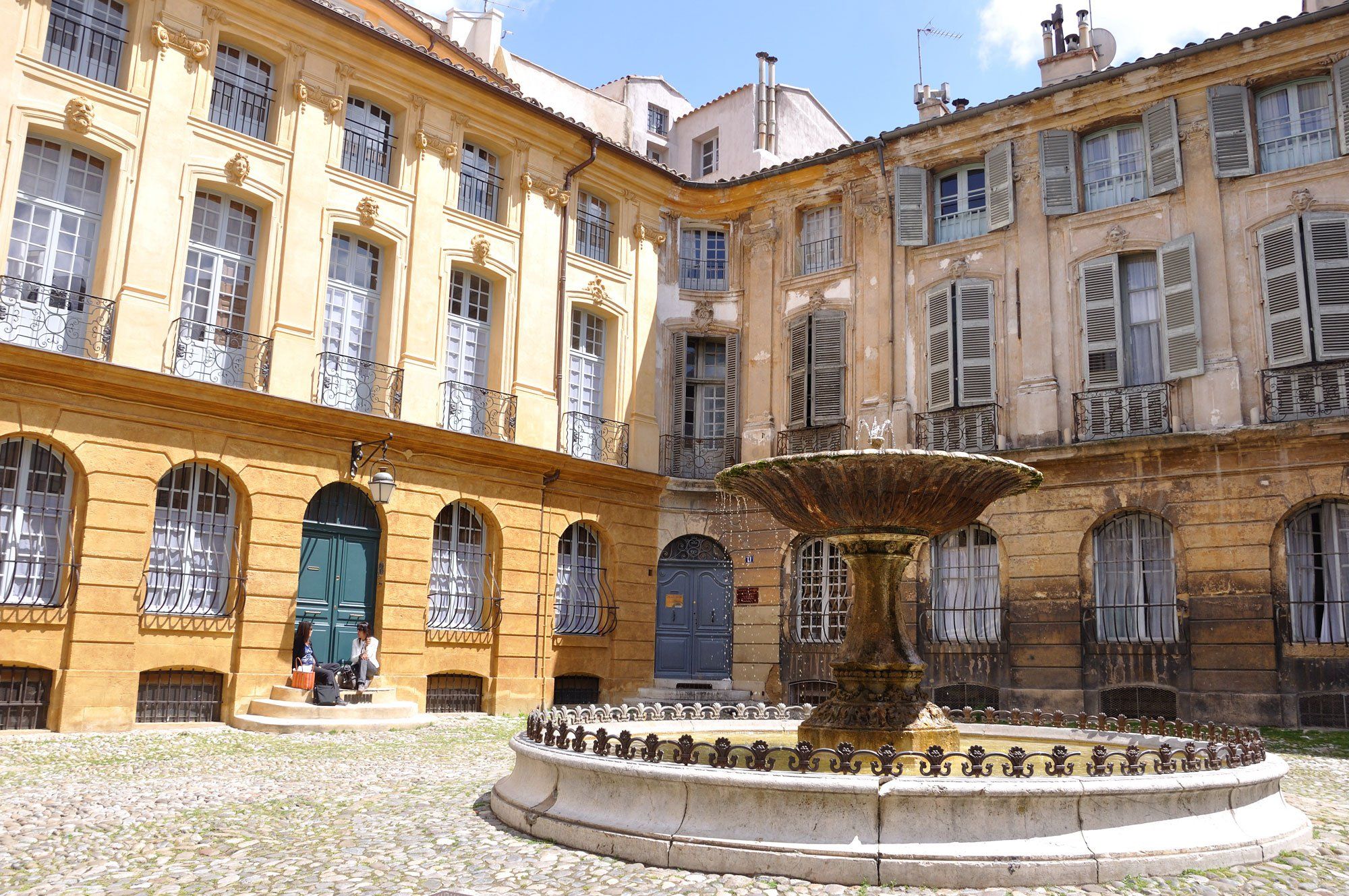Is it even necessary to present Aix-en-Provence? Former capital of Provence in the 15th century, a Mecca of art and literature, Aix is a city with an always flourishing cultural life. With its superb heritage, perfectly maintained and restored, the city remains one of the most attractive and visited in the Bouches-du-Rhône. In an exceptional environment, protected by the Montagne de la Sainte Victoire, surrounded by superb Provençal bastides reigning over a preserved countryside, Aix-en-Provence unveils its treasures.
A cultural gem in the heart of the Bouches-du-Rhône
Aix en Provence: a city full of cultural attractions
Founded by the Romans in 122 BC, it was called Aquae Sextiae (waters of the Sextius). Its creation was motivated by the need to ensure the security of trade between Rome and the nearby Phocaean city. The city grew rapidly, and became one of the highlights of Roman culture in Gaul. Proof of its importance, it has a theater and ramparts. In 1189, the Counts of Provence decided to move there to make it their new residence. This gave to the city to the name of "capital of Provence" and increased its expansion. The arrival of King René in the 15th century marked the city' s apogee, and it would always retain the title of "King René's city". This historical figure is widely mentioned and celebrated today in the city. Today, Aix en Provence is one of the most beautiful villages in Provence.
Painters, writers, artists declared their love for the city of Aix-en-Provence.
The painter Paul Cézanne was born and lived all his life in Aix-en-Provence. Died in 1906, the French painter, a figure of the impressionist movement, is nowadays considered to be one of the precursors of Cubism. The Aix landscapes where he grew up were his main sources of inspiration, especially the Sainte Victoire mountain, where he painted several canvases, and the landscapes of the surrounding Provençal villages. Cézanne's childhood friend, Emile Zola, spent his first 18 years there. Cézanne's vestiges are everywhere, it is impossible to visit the city without meeting in one way or another the famous child of the country.
Other famous literature or painting figures have succumbed to the charm of the city: Guiguou, Frédéric Mistral, Blaise Cendars...
The motto "city of water, city of art" describes perfectly the city and it is not the many cultural events scheduled throughout the year that will contradict it. Theaters, festivals and other artistic performances are organized throughout the year. Every summer, the International Festival of Lyric Art and Music presents a prestigious programmation.
Aix-en-Provence: an architectural heritage not to be missed
A real open-air museum, the city center is an opportunity for beautiful walks, strolling through the lively and picturesque alleys. The famous Cours Mirabeau was built in the 17th century on the ramparts. At its western end, you will have the pleasure to discover a majestic fountain, the Fontaine de la Rotonde, which was erected in 1860. Feel free to stop by one of the many cafés or breweries in the Cours or the old town. Aix en Provence also has many restaurants which will certainly delight you. Markets and other small charming shops abound and are constantly an opportunity to discover original or traditional crafts. It is also a perfect place for shopping enthusiasts who will find a large number of shops concentrated in the city's alleys. If you are on holiday in Provence, you will not be able to visit Provence without stopping for a day in Aix.
And for those who would like to spend several days there, have you thought about renting your holiday in hotel apartments or holiday residences that are slightly different from the hotels?
Taste the Aixoise evenings
As a student city, Aix is much more lively at night than its big sister Marseille. The evenings are frequent and the students and the local bourgeoisie come to enjoy the parties. Many nightclubs guarantee a lot of fun until the end of the night. Welcoming in all seasons, Aix en Provence is a city to discover or rediscover.
Focus on Paul Cézanne: the emblematic painter from Aix en Provence
"When I was in Aix, it seemed to me that I would be better off somewhere else, now that I'm here, I regret Aix... When you are born there, it's over, nothing else suits you."
Born in 1839 in Aix en Provence, Paul Cézanne was born into a rather wealthy family, his father had a hat shop on the Cours Mirabeau, then founded a bank. He began studying law with no enthusiasm and also took drawing classes. He studied exclusively in Aix, where he acquired a solid classical culture. As his artistic vocation began to emerge, he decided to take drawing classes in Paris, where he met Pissaro and Guillemin. The one who was considered as one of the creators of 20th century painting, failed the exam of the School of Fine Arts in Paris. Returning to Aix to work in the paternal bank, he quickly decided to go back to Paris, this time with the definitive idea of becoming a painter. Self-taught painter, he alternates between Paris and Aix. His early works were clumsy and had nothing in common with those of his impressionist colleagues.
First impressionist essays
From 1863, Cézanne regularly proposed paintings to the jury of the Salon Officiel de Paris, they were all systematically refused. His paintings already show a great variety in the choice of themes. Following Pissaro's example, he devoted himself to the landscape on the pattern and immersed himself in the impressionist way. He shares with the other impressionists a concern for an accurate representation of nature. Pissaro got Cézanne to participate in the first impressionist exhibition in 1874. Unfortunately for him, his works were very badly received, so Cézanne refused to participate in the second edition. For the third exhibition in 1877, his paintings were ignored by the public, who found them heavy and coarse, and Cézanne was severely damaged by the critics. Shattered and deeply wounded, he then distanced himself from his friends and stayed away from impressionist exhibitions.
In 1886, he then distanced himself from his childhood friend Emile Zola because he recognized himself in the main character of "L'Oeuvre", in which an aborted painter was chasing in vainhis life's work. The same year, the death of his father gave him a comfortable inheritance that protected him the rest of his life.
The consecration
The turning point came in 1895, when a young art merchant organized a retrospective in which 150 works by Cézanne were presented. It was then that he was discovered and became a reference for young artists. Recognition will grow and its reputation will continue to grow. But the real revelation came later: almost a hundred years later, in 1995 with the exhibition held in Paris at the Grand Palais and also in London.
While in Aix, do not miss the walk "in the footsteps of Cézanne", a route marked with the letter C that crosses the city through the places frequented by the painter. It is also possible to visit Paul Cézanne's workshop to immerse yourself in his familiar objects and artistic experiences.
The best way to discover the region
On holiday in the region, looking for beautiful walks? Feel free to test our hikes!
